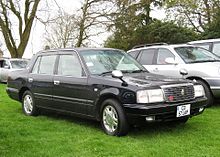
A vehicle start-stop system or stop-start system automatically shuts down and restarts the internal combustion engine to reduce the amount of time the engine spends idling, thereby reducing fuel consumption and emissions. This is most advantageous for vehicles which spend significant amounts of time waiting at traffic lights or frequently come to a stop in traffic jams. Start-stop technology may become more common with more stringent government fuel economy and emissions regulations. This feature is present in hybrid electric vehicles, but has also appeared in vehicles which lack a hybrid electric powertrain. For non-electric vehicles fuel economy gains from this technology are typically in the range of 3–10%, potentially as high as 12%. In the United States, idling wastes approximately 14.8 billion liters of gasoline per year.
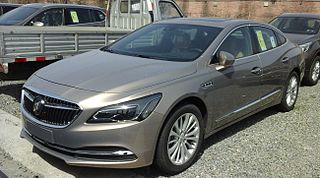
The Buick LaCrosse is a four-door, front-wheel-drive sedan manufactured by Buick since model year 2005, and marketed variously across four generations for the North American and Chinese markets.

The Saturn Vue is a compact SUV that was sold and built by Saturn, and it was Saturn's best-selling model. It was the first vehicle to use the GM Theta platform when it was introduced in 2001 for the 2002 model year. The Vue was later facelifted for the 2006 model year. A second generation model was launched in 2007 for the 2008 model year as a rebadged Opel Antara. The Vue production in North America ended as GM wound down the Saturn brand during its 2009 reorganization.
The GM Ecotec engine, also known by its codename L850, is a family of all-aluminium inline-four engines, displacing between 1.4 and 2.5 litres. Confusingly, the Ecotec name was also applied to both the Buick V6 Engine when used in Holden Vehicles, as well as the final DOHC derivatives of the previous GM Family II engine; the architecture was substantially re-engineered for this new Ecotec application produced since 2000. This engine family replaced the GM Family II engine, the GM 122 engine, the Saab H engine, and the Quad 4 engine. It is manufactured in multiple locations, to include Spring Hill Manufacturing, in Spring Hill, Tennessee, with engine blocks and cylinder heads cast at Saginaw Metal Casting Operations in Saginaw, Michigan.
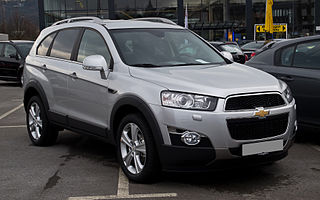
Theta is General Motors' automobile platform for compact/mid-size crossover SUVs. The architecture debuted in 2002 with the Saturn Vue and was later used for the Chevrolet Equinox and Captiva and similar models.
Global Hybrid Cooperation, formerly Advanced Hybrid System 2 (AHS2), is a set of hybrid vehicle technologies jointly developed by General Motors, Daimler, and Chrysler LLC, with BMW joining in 2005. It uses 2 or 3 planetary gearsets in an automatic transmission: one on the internal combustion engine (ICE) side paired with a second, forming the compound split, and possibly one third additional planetary gearset to multiply the number of fixed gear ratios. General Motors has stopped using the "AHS2" name as of 2006, preferring to call it simply a two-mode hybrid system.
Hybrid Synergy Drive (HSD), also known as Toyota Hybrid System II, is the brand name of Toyota Motor Corporation for the hybrid car drive train technology used in vehicles with the Toyota and Lexus marques. First introduced on the Prius, the technology is an option on several other Toyota and Lexus vehicles and has been adapted for the electric drive system of the hydrogen-powered Mirai, and for a plug-in hybrid version of the Prius. Previously, Toyota also licensed its HSD technology to Nissan for use in its Nissan Altima Hybrid. Its parts supplier Aisin Seiki Co. offers similar hybrid transmissions to other car companies.

The Saturn Aura is a four-door, five-passenger front engine/front-wheel drive mid-sized sedan manufactured and marketed by GM's Saturn subsidiary over a single generation from 2006 to 2009. The car launched one year before the seventh generation Chevrolet Malibu, its most closely related platform companion.
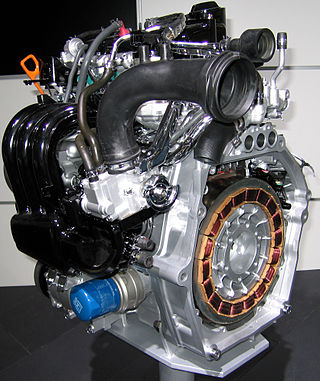
Integrated Motor Assist is Honda's hybrid car technology, introduced in 1999 on the Insight. It is a specific implementation of a parallel hybrid. It uses an electric motor mounted between the internal combustion engine and transmission to act as a starter motor, engine balancer, and assist traction motor.

The Opel Antara is a compact crossover SUV which was marketed by Opel from 2006 to 2015. Based on the Theta platform, the Antara closely shared its underpinnings and powertrains with the Chevrolet Captiva. However, it only offered five seats instead of seven, and features a different exterior and interior design. Sales commenced in November 2006, as the indirect successor to the Isuzu-based Frontera range.
Mild hybrids (MHEV) are generally cars with an internal combustion engine (ICE) equipped with a negligibly bigger electric combined motor and generator in a parallel hybrid configuration allowing the engine to be turned off whenever the car is coasting, braking, or stopped, and then quickly restarted once power is again required. Mild hybrids may employ regenerative braking and some level of power assist to the internal combustion engine, but mild hybrids do not have an electric-only mode of propulsion.

The Green Car of the Year is a Car of the Year award from the Green Car Journal. The winner is selected by an 11-member panel comprising automotive and environmental experts. Invited jurors have included Mario Andretti; Carroll Shelby, Jay Leno, Carl Pope, Christopher Flavin, Jonathan Lash and Jean-Michel Cousteau.
Hybrid vehicle drivetrains transmit power to the driving wheels for hybrid vehicles. A hybrid vehicle has multiple forms of motive power.
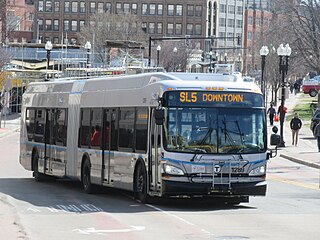
A hybrid electric vehicle (HEV) is a type of hybrid vehicle that combines a conventional internal combustion engine (ICE) system with an electric propulsion system. The presence of the electric powertrain is intended to achieve either better fuel economy than a conventional vehicle or better performance. There is a variety of HEV types and the degree to which each function as an electric vehicle (EV) also varies. The most common form of HEV is the hybrid electric car, although hybrid electric trucks, buses, boats and aircraft also exist.

The Chevrolet Volt is a plug-in hybrid car manufactured by General Motors, also marketed in rebadged variants as the Holden Volt in Australia and New Zealand and the Buick Velite 5 in China, and with a different fascia as the Vauxhall Ampera in the United Kingdom and as the Opel Ampera in the remainder of Europe. Volt production ended in February 2019.
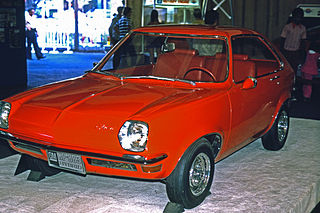
In the late 1960s, General Motors Company directed its GM R&D and Pontiac divisions to develop concept mini-cars for urban drivers. GM developed the XP-883 an experimental plug-in hybrid car demonstrated by General Motors in 1969. Primarily intended as a commuter vehicle, the very small car had a fiberglass body with a design resembling the future Chevrolet Chevette. The two-door hatchback had seating for two adults and two children, though the children sat in rear-facing seats and would enter and exit through the tailgate. It was powered by the combination of a two-cylinder engine and a DC electric motor plus batteries. Electricity was stored in six 12-volt batteries placed between the rear wheels. The related Pontiac concept was the Pontiac X-4 with a radical two stroke aircraft type radial engine.
Voltec, formerly known as E-Flex, is a General Motors powertrain released in November 2010. The Voltec architecture is primarily a plug-in capable, battery-dominant electric vehicle with additional fossil fuel powered series and parallel hybrid capabilities.

A range extender is a fuel-based auxiliary power unit (APU) that extends the range of a battery electric vehicle by driving an electric generator that charges the vehicle's battery. This arrangement is known as a series hybrid drivetrain. The most commonly used range extenders are internal combustion engines, but fuel-cells or other engine types can be used.

The second generation Chevrolet Volt is a plug-in hybrid electric compact car produced by General Motors under the Chevrolet brand. It debuted at the 2015 North American International Auto Show to replace the original Volt, on sale since 2010. Retail deliveries as a 2016 model year began in October 2015 in the U.S. and Canada, and it was released in Mexico in December 2015. Availability of the 2016 model was limited to California and the other 10 states that follow California's zero emission vehicle regulations. It went on sale as a 2017 model year in the rest of the U.S. in February 2016. Volt production ended on February 15, 2019.
There are numerous versions of vehicle propulsion systems. Many of those came into fruition due to need for cleaner vehicles. Each of them might have many abbreviations and some might be misleading. This article explains shortly what defines them.
